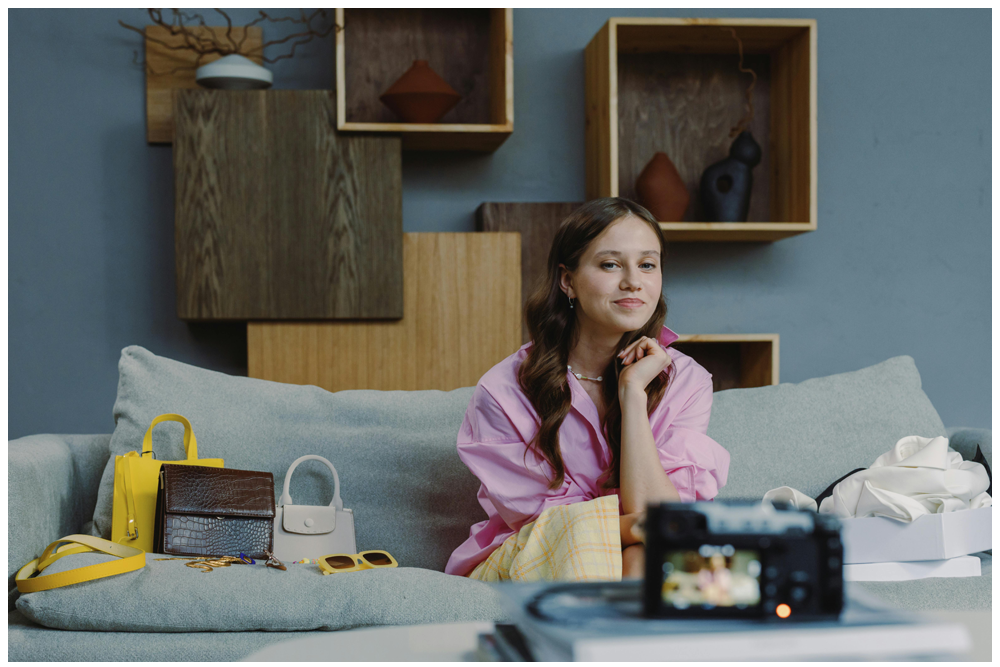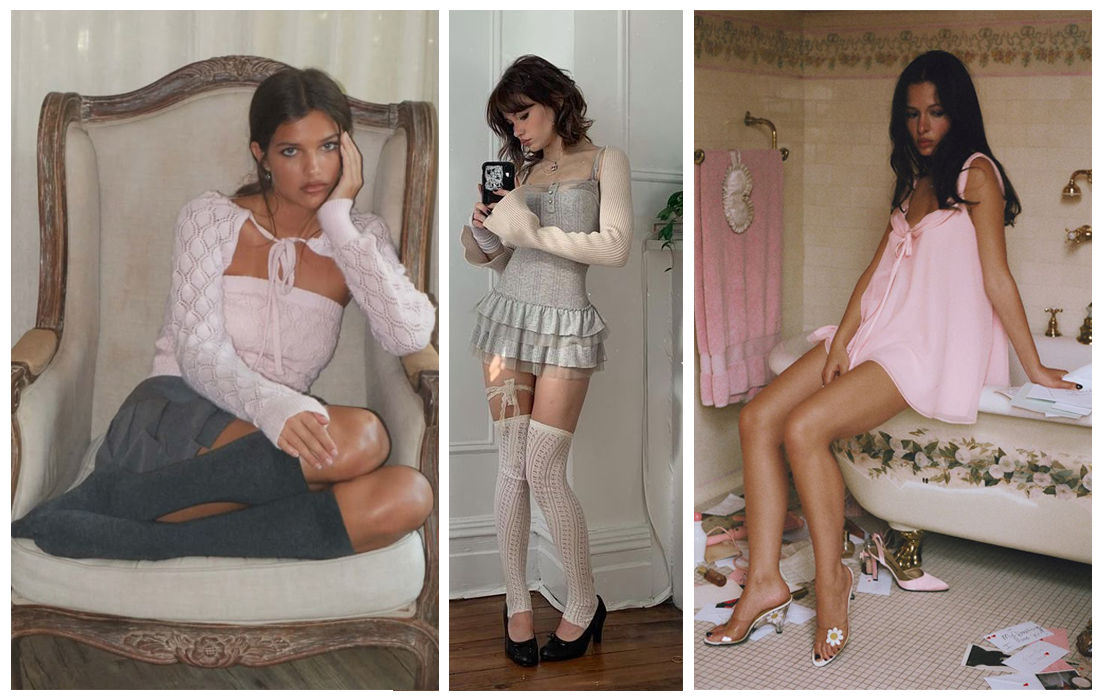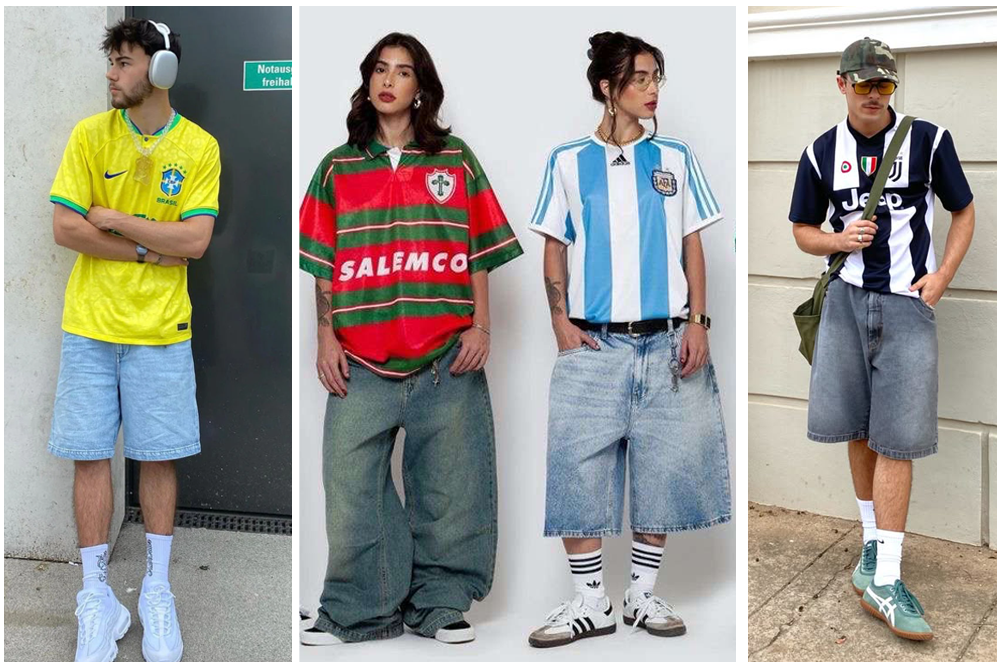Why the Most Popular Aesthetics on TikTok Never Work IRL
In the algorithmic petri dish of TikTok, trends mutate fast. One minute, we’re all romanticizing our lives with Lana Del Rey filters and ballet flats, the next we’re cosplaying as 90s football hooligans or attempting to look like we just stepped out of a Glossier ad. From Coquette to Blokecore to Clean Girl, TikTok is a never-ending runway of aesthetic micro-movements. But while these trends rack up millions of views and fuel Shein hauls and Depop searches, something weird happens when you try to take them off your phone and into the real world: they mostly… suck.
Not because they’re inherently bad (okay, some are), but because these viral aesthetics are built for performance, not practicality. They work in 15-second clips, with perfect lighting, curated soundtracks, and that ever-important “main character energy.” But try walking into a grocery store dressed like a Regency-era schoolgirl or a football casual from 1994, and the spell breaks instantly. It’s not just cringe — it’s uncomfortable, confusing, and often completely disconnected from the lived reality of people outside the app.
So what is it about TikTok’s favorite aesthetics that makes them fall apart when they hit the pavement?

The Coquette Trap: Lana Del Rey Lies and the Myth of Innocent Femininity
Coquette is the reigning queen of failed-to-launch aesthetics. Think bows, lace, vintage nightgowns worn in daylight, smeared mascara, and Tumblr-era girlhood romanticism. It’s a look that screams “I listen to Ultraviolence on repeat and pretend to live in a Sofia Coppola film.” On TikTok, it’s filtered, mysterious, and hyper-feminine. In real life? It looks like you’re in the wrong outfit for literally every occasion.
The problem with Coquette isn’t just that it’s costumey — it’s that it relies on a very specific fantasy of white, thin, doll-like femininity that doesn’t scale. The aesthetic flirts with fragility as a performance, but IRL fragility isn’t cute — it’s impractical. You can’t commute in a corset or do your laundry in Mary Janes and thigh-high stockings. You’ll look less like a tragic heroine and more like a glitch in the simulation.
Plus, Coquette’s return has stirred up old conversations around “Lolita aesthetics” and the romanticization of submissive, infantilized femininity. While TikTok users claim to be reclaiming it, the dissonance between that intent and the way it’s received in real life makes it hard to pull off without raising eyebrows — or worse, attracting creepy male attention.

Blokecore: From Satire to Sincerity, and Then Straight to Hell
If you’ve seen a dude in a vintage Adidas track jacket, Umbro shorts, and a scarf for a team he doesn’t support, congratulations: you’ve witnessed Blokecore. It started as a tongue-in-cheek nod to UK football culture — a kind of ironic homage to the tribalism and hypermasculinity of 90s terrace fashion. On TikTok, it’s usually paired with grainy camera filters, Eurodance tracks, and captions like “no ball knowledge but vibes immaculate.”
But somewhere along the line, Blokecore stopped being ironic. And when you take it off TikTok and into a pub or a public park, it raises more questions than it answers. Are you going to a match? Are you trying to get in a fight? Is this cosplay?
The thing is, real-life football fashion is deeply contextual. In the UK, it’s tied to geography, class, and a history of hooliganism. Wearing a Millwall jersey in the wrong part of London isn’t just a look — it’s a political statement, whether you mean it or not. When TikTok boys from Brooklyn or LA rep Blokecore like it’s a quirky fashion subculture, it flattens the entire context into just another disposable vibe.
And unlike Y2K or Cottagecore, Blokecore isn’t soft or nostalgic. It’s aggressive, performative, and super awkward outside the frame of a TikTok mirror selfie. There’s a reason most people don’t want to look like they just stumbled out of a Guy Ritchie film set.

Clean Girl: When Minimalism Becomes a Maximum Chore
If Coquette is messy, emotional, and ultra-feminine, Clean Girl is her Goopified, smug older sister. Think slicked-back buns, gold hoops, no-makeup-makeup, beige yoga sets, and the scent of overpriced body oil. She drinks matcha, journals before 7 AM, and posts “that girl” routines with ASMR-level editing. Her whole vibe is “effortless wellness,” though in reality, it takes about 40 steps and a $300 Sephora haul to achieve.
Clean Girl aesthetic works on TikTok because it’s visual shorthand for aspiration. It whispers discipline, control, and glow-up. But once you step outside, it becomes a different story. The average person doesn’t have the time, money, or bone structure to maintain that kind of polish 24/7 — and why should we?
Even worse, the aesthetic has been rightfully criticized for its erasure of the Black and brown women who pioneered many of its staples — from slick baby hairs to dewy skin — long before it got rebranded as “clean.” When white influencers package it as a minimalist aesthetic, it feels like a sanitization of cultures that were previously labeled as “ghetto” or “too much.”
And, again, IRL practicality is an issue. Gelled hair and sweatproof makeup don’t stand a chance in actual humidity or on a packed train. Your beige outfit will be coffee-stained before 9 AM. The “clean” part is a myth.

TikTok Isn’t the Real World — and That’s the Point
So what gives? Why do we keep trying (and failing) to wear these TikTok aesthetics in real life?
Because TikTok isn’t real life. It’s a curated performance space — a stage with filters and background music and carefully selected lighting. Most of these aesthetics are less about actual fashion and more about storytelling. They’re visual fanfiction, fantasy cosplay for people stuck in suburban bedrooms or uninspiring jobs. And there’s nothing wrong with that — escapism is part of the appeal. But it becomes a problem when we start expecting those aesthetics to function like real-world style.
Fashion IRL has to account for context: where you’re going, who you’re with, how cold it is outside, whether you’ll be sitting in a metal chair for two hours. TikTok aesthetics ignore all of that. They’re often rooted in static visuals rather than dynamic movement, which is why they fall apart when you actually try to live in them.
The Rise of “Aesthetic Fatigue”
There’s also something deeper happening here: a kind of aesthetic fatigue. In a world where we’re constantly expected to brand ourselves — to have a “look,” a “vibe,” a “core” — more and more people are pushing back. You can see it in the quiet rise of “non-aesthetic aesthetics” like “Normcore 2.0,” where the whole point is to look like you’re not trying. Or in the resurgence of DIY and vintage styles that don’t neatly fit into trends.
People are tired of looking like they’re trying to go viral. Tired of getting dressed for the feed instead of the sidewalk. Tired of aesthetics that only work in theory, or under ring lights.
Real style isn’t built in TikTok drafts. It’s built in messy closets, weather-beaten coats, and shoes that survive more than one season. It’s less about being seen and more about feeling like yourself, even if that self doesn’t match a trending sound or a viral hashtag.
So What Does Work IRL?
If TikTok aesthetics are breaking down in the wild, what’s replacing them?
It’s not necessarily that trends are dead — it’s that individuality is making a comeback. People are mixing eras, wearing what’s comfortable, thrifting again, or experimenting without needing a label for everything. The best-dressed people right now don’t look like Coquette dolls or Clean Girl clones — they look like they woke up, threw on whatever made sense, and somehow made it work.
In other words: TikTok is where trends are born, but the streets are where style survives. And if your aesthetic can’t handle the IRL test — of weather, walking, work, and not looking like an NPC — then maybe it was never fashion to begin with.
TL;DR: The internet might tell you to dress like a Victorian ghost, a 90s football lad, or a clinically dewy minimalist, but when you try it in real life, it mostly doesn’t work. And that’s okay. Trends are fleeting, but getting dressed is forever. Pick comfort. Pick context. Pick you.






